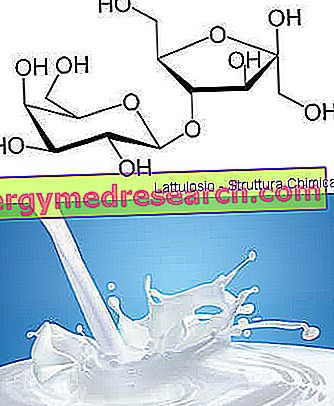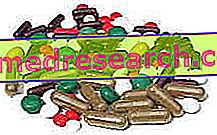What is Lactoferrin
Lactoferrin (or lactotransferrin) is a glycoprotein with an antimicrobial and iron-transporter action. Known for some time (discovered by Sorensen and Sorensen in cow's milk in 1939), it has recently been re-evaluated for its antioxidant, immunomodulatory and anti-infective properties.
Functions, Properties and Uses
Typical of milk, as its name suggests, lactoferrin is also present in various mucous secretions, such as tears and saliva. More abundant in colostrum than in transition and maintenance milk, lactoferrin is also typical of neutrophil granulocytes, immune cells with defense functions against bacterial and fungal infections.

The antimicrobial properties of lactoferrin are mainly due to the ability to bind iron, subtracting it from the metabolism of those bacterial species - such as Escherichia coli - which depend on it for its own multiplication and adhesion to the intestinal mucosa (bacteriostatic effect); it also has a direct antibacterial action (bactericidal), thanks to the ability to damage the outer layers of the cell membrane (LPS) of some negative GRAM bacterial species.
It is therefore no coincidence that lactoferrin is also used by the food industry to treat beef carcasses and protect them from surface bacterial contamination. Similarly, the fact that lactoferrin concentrates at the level of many mucous membranes, which by definition are those layers of cells that cover the inner surface of the cavities and the channels of the organism communicating with the outside, and not exposed to the attacks of pathogens.
The antiviral effect of lactoferrin is related to its ability to bind to the glycosaminoglycans of the plasma membrane, preventing the entry of the virus and blocking infection in the bud; this mechanism has appeared effective against Herpes Simplex, cytomegalovirus, and HIV.
There is also evidence for a possible role of lactoferrin as an anticancer agent, demonstrated on numerous occasions on chemically induced tumors in laboratory rats.
The ability of lactoferrin to bind ferric ion (Fe3 +) is twice higher than transferrin, the main plasma protein responsible for iron transport in the circulatory stream (both are part of the same family of proteins - called transferrins - capable of binding and transferring ions) Fe 3+). Each lactoferrin molecule can bind itself to two ferric ions and according to this saturation it can exist in three distinct forms: apolactoferrin (iron-free), lactoferrin monoferric (linked to a single ferric ion) and ololactoferrin (which binds to itself two ions ferric). Protein activity is also maintained in acidic environments and in the presence of proteolytic enzymes, including those secreted by microorganisms.
As anticipated, the first milk that the woman produces after giving birth, colostrum, is particularly rich in lactoferrin, which favors the development of beneficial intestinal bacteria, helping the child to eradicate the pathogens responsible for gastroenteritis (colic of the newborn).
As the days pass, the amount of lactoferrin is reduced, in parallel with the development of the child's immune defenses. This is why lactoferrin concentrations in cow's milk are quite variable (cows are milked very long after the calf is born).
SOME DATA:
- lactoferrin concentration in human venous plasma: 0.12 μg / ml;
- lactoferrin concentration in human colostrum: 3.1 to 6.7 mg / ml;
- lactoferrin in human milk: 1.0-3.2 mg / ml;
- lactoferrin in cow's milk: very variable, in the literature from 1.15 μg / ml to 485.63 μg / ml.
In children, lactoferrin is also an important source of iron and facilitates its absorption.
Iron is the only mineral present in breast milk in smaller quantities than the needs of the infant; this deficit is however filled by the stocks accumulated during fetal life (maternal milk is undoubtedly the most recommendable food for the newborn, as it supplies all the nutrients but above all contains them in the right proportions).
The ability of lactoferrin to bind iron also suggests a possible role as an antioxidant agent. By sequestering excess iron, it prevents this from producing the well-known pro-oxidant effects (Fe2 + + H 2 O 2 → Fe3 + + OH · + OH -).
Recent studies have ascribed to lactoferrin promoter properties on the activity of osteoblasts and chondrocytes, cells respectively responsible for the production of bone and cartilage.
Laboratory diagnostics
In diagnostics, faecal lactoferrin concentrations can be evaluated for the presence of inflammatory bowel diseases, such as Crohn's disease and ulcerative colitis. These pathologies, in fact, are typically accompanied by an increase in fecal lactoferrin.
Lactoferrin as a supplement
The amount of studies on the immunomodulatory properties of lactoferrin in human and animal models is discreet. Many of these studies show that lactoferrin has interesting anti-infective, immunomodulatory properties and promoters of a correct intestinal ecology.
During antibiotic therapies, lactoferrin may on one hand increase the susceptibility of bacteria to drug therapies and on the other hand, in synergy with probiotics, promote the growth of beneficial intestinal bacterial strains (Lactobacillus or Bifidobacterium) that depend less on the availability of iron . Obviously a similar therapeutic strategy can be adopted only and exclusively after specific medical advice.
In supplements, lactoferrin is generally present together with substances endowed with synergistic action, such as probiotic and FOS strains.



